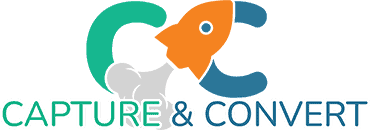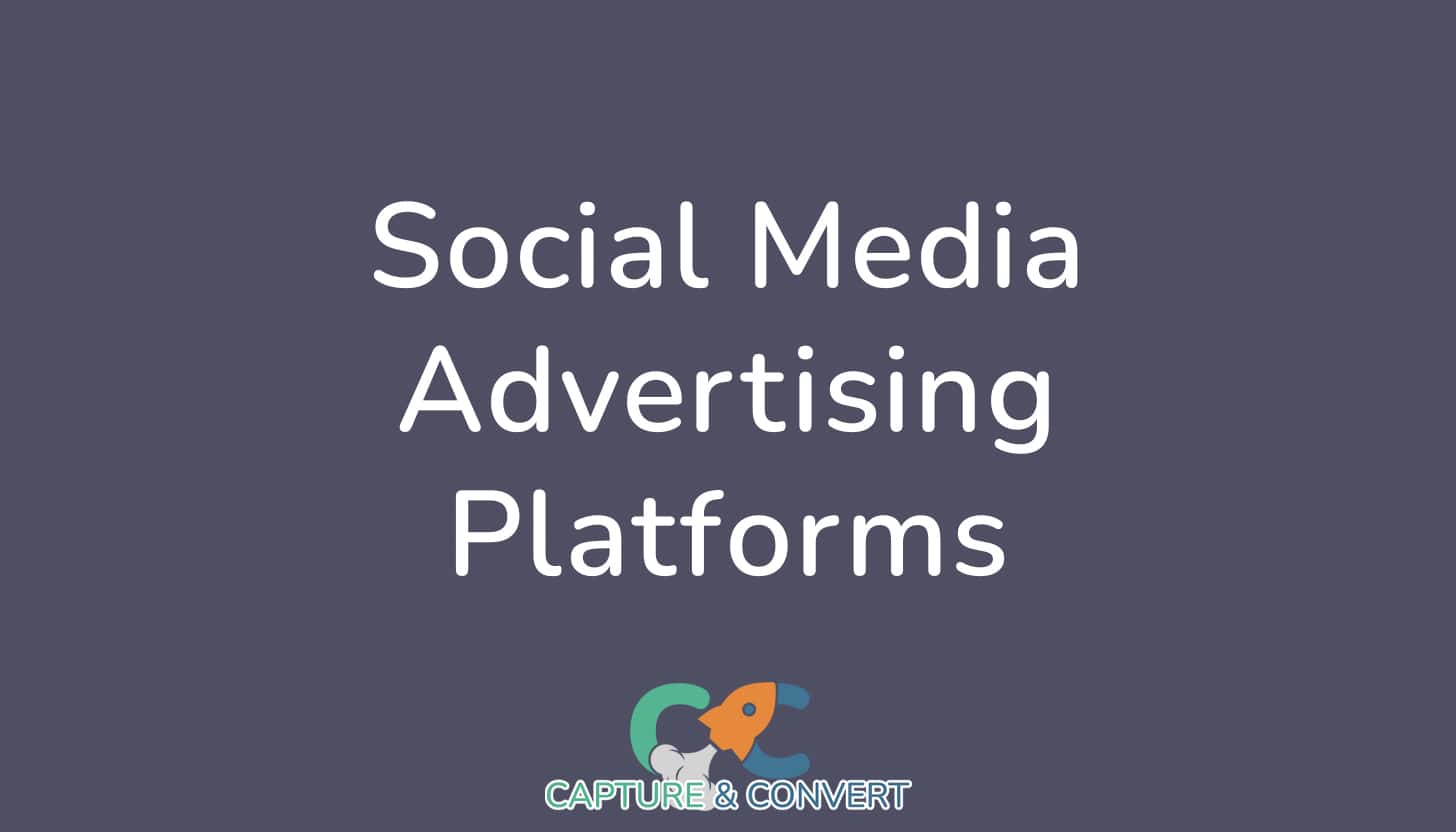Unlock the power of social media ads for your local business. Explore the top 8 platforms, their unique benefits, and how to choose the right one for maximum ROI.
Social media advertising platforms are online channels such as Facebook, Instagram, Twitter, and LinkedIn where businesses can create and promote their ads to reach specific target audiences.
These platforms are vital for local businesses seeking to generate more local leads because they offer a direct route to connect with potential customers within their geographical area.
The ability to leverage detailed audience targeting, engage in local promotions, and drive brand visibility through these platforms is crucial in capturing the attention of nearby prospects and converting them into leads.
These platforms and social media strategies to boost engagement are ideal for this.
In this article, you'll discover the top 8 social media advertising platforms for local lead generation, learn why they are essential for regional businesses, and understand how to harness their unique features to connect with and convert local prospects effectively.
Contents
- Importance of Social Media Advertising for Local Lead Generation
- Social Media Advertising's Effectiveness
- Social Media Ads' Influence on Branding
- 1. Facebook Ads
- 2. Instagram Ads
- 3. LinkedIn Ads
- 4. Twitter Ads
- 5. Pinterest Ads
- 6. Snapchat Ads
- 7. TikTok Ads
- 8. YouTube Ads
- Effective Ad Types Across Social Media Platforms
- Choosing the Right Social Media Platform for Local Ads
- Legal Aspects in Social Media Advertising
- ROI Measurement for Social Media Campaigns
- Seasonal Effects on Social Media Ad Performance
- Cost Considerations for Local Social Media Advertising
- Synergizing Social Media Ads with Other Lead Strategies
Importance of Social Media Advertising for Local Lead Generation

Social media advertising platforms are essential for local lead generation because they offer precise audience targeting, enabling businesses to reach local prospects with relevant content.
They provide a cost-effective way to establish brand awareness and trust within the local community through engaging visual and interactive content.
Additionally, these platforms facilitate real-time interactions with potential leads, fostering customer engagement and potentially converting them into valuable local customers.
Overall social media advertising has proven to be an essential tool in promoting affiliation, conversation and responsiveness to increase click-through rate and conversion rate as demonstrated by a research authored by S. Yang, S. Lin, and J. Carlson and published in the Journal of Marketing Management on February 23rd 2016.
Benefits
Social media advertising brings numerous benefits to businesses using them in their marketing strategy.
The following list shows 6 benefits of using social media advertising for lead generation.
- Precise Audience Targeting: Social media advertising allows businesses to target their local audience with pinpoint accuracy, ensuring that their ads are seen by potential customers in the local area.
- Cost-Effective: It offers a cost-effective advertising solution, enabling local businesses with varying budgets to create and run ads without breaking the bank.
- Brand Awareness: Social media advertising helps build brand awareness and trust within the local community through visually engaging and interactive content.
- Real-Time Interactions: It facilitates real-time interactions with potential leads, fostering customer engagement and increasing the likelihood of conversions.
- Diverse Ad Formats: Various ad formats, including image, video, carousel, and interactive formats, offer versatility in conveying messages.
- Detailed Analytics: Social media platforms provide comprehensive analytics, allowing businesses to track the performance of their ads and make data-driven improvements.
Drawbacks

The following list shows 6 potential drawbacks of using social media advertising platforms.
- Competition: Increased competition on social media platforms can drive up ad costs and make it harder to stand out in a crowded space.
- Algorithm Changes: Frequent changes in social media algorithms can affect the visibility and effectiveness of ads.
- Ad Fatigue: Overexposure to ads can lead to ad fatigue among users, reducing their responsiveness to the content.
- Learning Curve: For businesses new to social media advertising, there might be a learning curve in understanding how to create effective ad campaigns.
- Budget Constraints: While social media ads can be cost-effective, a limited budget may restrict the frequency and reach of ads.
- Ad Blocking: Some users employ ad-blocking software, which can prevent ads from being seen by the target audience.
Despite the potential challenges, social media advertising platforms wield a significant positive impact on lead generation.
Social Media Advertising's Effectiveness
The effectiveness of social media advertising can vary depending on the type of local business and its target demographic.
While it offers potential benefits to a wide range of businesses, industries like retail, food services, and entertainment often find it particularly effective in reaching local audiences.
However, businesses in highly niche or specialized sectors might not see the same level of impact.
Social Media Ads' Influence on Branding
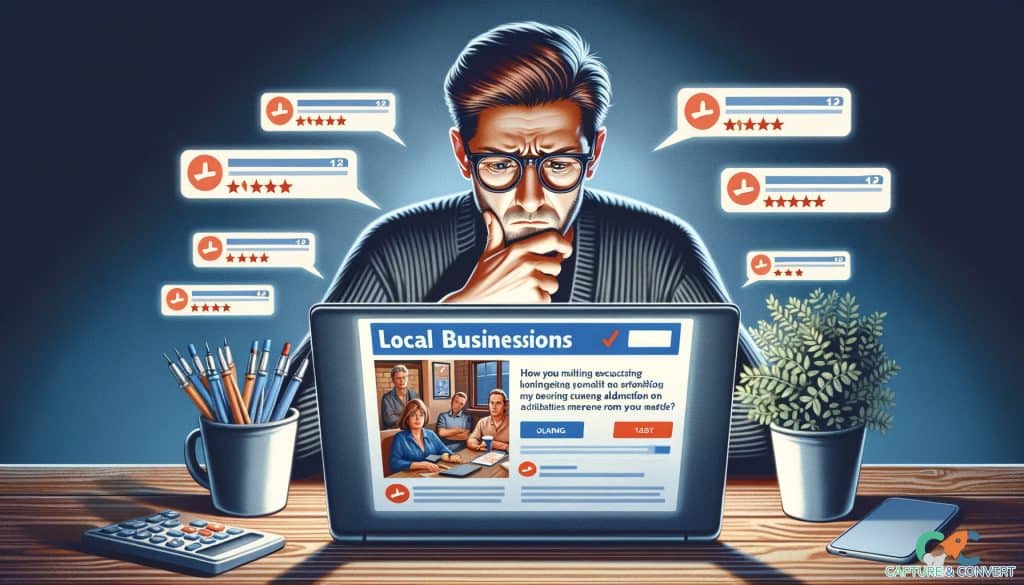
Social media advertising can significantly impact the brand image of local businesses.
Positively, it provides an opportunity to convey a strong and positive brand identity, engage with customers, and enhance brand recognition.
However, it can also have a negative impact if not executed well, leading to issues like negative comments or misalignment with the intended brand image.
Careful planning and execution are crucial to ensure a positive effect on brand image.
Listed below are 8 top social media advertising platforms for local lead generation.
- Facebook Ads
- Instagram Ads
- LinkedIn Ads
- Twitter Ads
- Pinterest Ads
- Snapchat Ads
- TikTok Ads
- YouTube Ads
1. Facebook Ads

Facebook Ads is a versatile social media advertising platform with extensive reach and targeting capabilities, making it an ideal choice for local businesses aiming to generate leads.
Its user-friendly interface allows businesses to create visually appealing ads and precisely target their desired audience based on demographics, interests, and behaviors.
The platform offers robust analytics, enabling businesses to measure the performance of their campaigns effectively.
The following list shows 4 benefits of using Facebook Ads for lead generation.
- Precise Targeting: Reach specific demographics and local audiences with tailored messages.
- Engaging Ad Formats: Utilize various ad formats, including images, videos, and carousels, to capture audience attention.
- Ad Performance Insights: Access detailed analytics to measure the effectiveness of campaigns and make data-driven decisions.
- Local Awareness Ads: Increase foot traffic and brand visibility among nearby customers.
The following list shows 3 possible drawbacks of using Facebook Ads.
- Competition: High competition can lead to increased costs per click (CPC) in competitive markets.
- Ad Fatigue: Continuous exposure to similar ads may result in decreased user engagement.
- Complexity: Mastering all the features can be time-consuming for beginners.
Price
Facebook Ads operates on a bidding system.
Costs vary based on factors like audience targeting, ad placements, and ad quality.
Average CPC can range from $0.50 to $2, but this varies widely based on competition and ad relevance.
2. Instagram Ads

Instagram Ads leverage the visual appeal of this platform, allowing local businesses to create eye-catching ads using images and videos.
With seamless integration with Facebook Ads, it offers precise targeting and a mobile-first experience.
Instagram Ads can effectively reach local audiences and engage them through compelling visuals.
The following list shows 4 benefits of Instagram Ads for lead generation.
- Visual Storytelling: Showcase products and services through high-quality images and videos.
- Mobile-First: Reach audiences primarily on mobile devices.
- Audience Engagement: Leverage the highly engaging Instagram platform for brand visibility.
- In-App Shopping: Direct users to your products or services within the app for seamless purchasing.
The following list shows 3 possible drawbacks of using Instagram Ads for lead generation.
- Competition: As a visually-focused platform, competition for users' attention is intense.
- Ad Creative Requirements: High-quality visuals and creatives are essential for success.
- Cost: Advertising on Instagram can be relatively expensive compared to some other platforms.
Price
Instagram Ads use a CPC or CPM bidding model, with costs varying based on factors like ad placement, audience targeting, and ad quality.
The average CPC can range from $0.20 to $2.00 or more, depending on competition and relevance.
3. LinkedIn Ads

LinkedIn Ads is a powerful platform for B2B lead generation and local business networking.
With targeting options based on job titles, industries, and company sizes, local businesses can effectively reach decision-makers.
It also offers sponsored content, sponsored InMail, and display ads for various campaign goals.
The following list shows 4 benefits of using LinkedInAds for lead generation.
- B2B Targeting: Reach professionals, decision-makers, and specific industries.
- Sponsored Content: Promote articles, images, and videos to a relevant audience.
- InMail: Send personalized messages directly to prospects.
- Lead Generation Forms: Easily collect leads directly from your ads.
The following list shows 3 possible drawbacks of using LinkedIn Ads.
- High CPC: Advertising on LinkedIn can be costlier compared to other social platforms.
- Niche Audience: If your target audience isn't on LinkedIn, it may not be the best choice.
- Ad Approval Time: Ads can take longer to get approved compared to other platforms.
Price
LinkedIn Ads use a bidding model, with costs per click (CPC) and cost per 1,000 impressions (CPM).
Costs can vary widely, with an average CPC ranging from $2 to $7 or more.
4. Twitter Ads
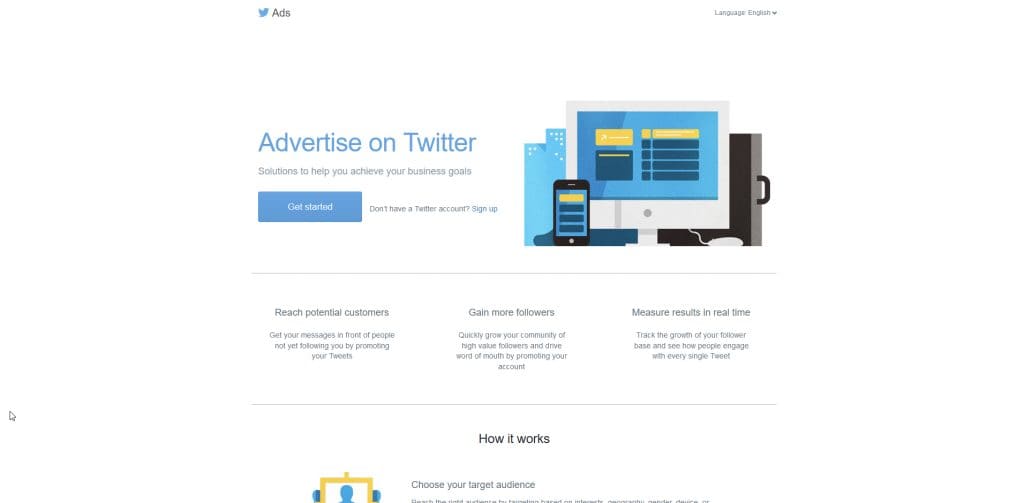
Twitter Ads allow local businesses to create tweet campaigns, promote profiles, and increase website traffic.
It's particularly useful for businesses aiming to engage with a wide audience or promote trending topics.
Twitter Ads offer extensive targeting options, including keywords, interests, and demographics.
The following list shows 4 benefits of using Twitter Ads.
- Engagement: Leverage the real-time nature of Twitter for timely promotions.
- Keyword Targeting: Target users based on keywords in their tweets or searches.
- Promote Trends: Drive conversations by promoting trending topics.
- Website Traffic: Increase visitors to your website or landing pages.
The following list shows 3 possible drawbacks of using Twitter Ads.
- Ad Visibility: Tweets can quickly get buried in users' feeds.
- Short Lifespan: The fast-paced nature of Twitter means tweets have a short lifespan.
- Ad Competition: Competition for trending topics and hashtags can be intense.
Price
Twitter Ads operate on a bidding model with costs per engagement (CPE) or cost per click (CPC).
Average CPC can range from $0.50 to $2.50 or more.
5. Pinterest Ads
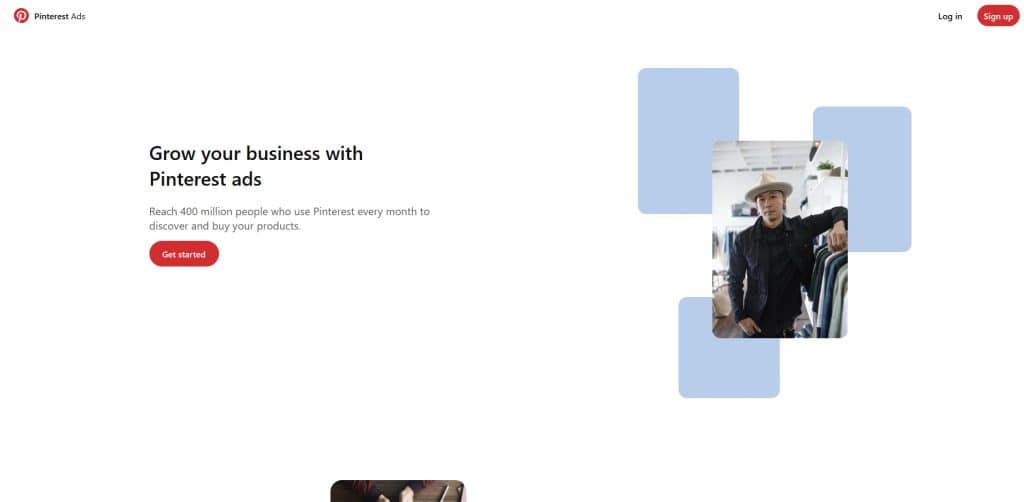
Pinterest Ads is a visual platform that allows businesses to create Promoted Pins, which appear in users' feeds.
It's an excellent choice for businesses in the lifestyle, fashion, and home improvement niches.
With a predominantly female audience, it offers specific targeting options to reach local leads.
The following list shows 4 benefits of using Pinterest Ads for lead generation.
- Visual Showcase: Display products, ideas, and services through eye-catching Pins.
- Audience Inspiration: Inspire users to take action, from discovering products to making purchases.
- Pin Types: Choose from various Promoted Pin types, including standard, video, and shopping Pins.
- Keyword Targeting: Reach users based on keywords, interests, and demographics.
The following list shows 3 possible drawbacks of using Pinterest Ads.
- Visual Content: Requires high-quality and visually appealing content.
- Limited Reach: Pinterest has a smaller user base compared to other platforms.
- Competition: Depending on your niche, competition for attention can be stiff.
Price
Pinterest Ads operate on a CPC or CPM model.
Average CPC can range from $0.10 to $1.50 or more, depending on targeting and competition.
6. Snapchat Ads
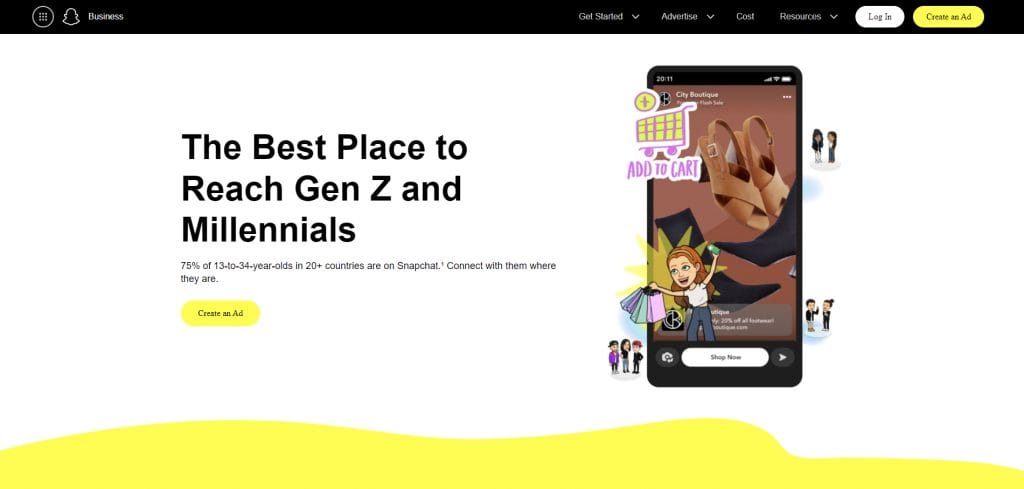
Snapchat Ads is a mobile-focused platform that's especially popular among younger audiences.
It offers various ad formats, including Snap Ads, Filters, and Lenses.
For local businesses targeting younger demographics, Snapchat can be highly effective.
The following list shows 4 benefits of using Snapchat Ads for lead generation.
- Engage Young Audiences: Reach a younger demographic, including Millennials and Gen Z.
- Immersive Ad Formats: Create interactive and engaging ad experiences with Filters and Lenses.
- Snapchat Discover: Advertise in the Discover section to reach a broad audience.
- Snap Map: Promote your business through the Snap Map feature.
The following list shows 3 possible drawbacks of using Snapchat Ads.
- Youth Audience: If your target audience is older, Snapchat may not be as effective.
- Ad Format Complexity: Creating interactive Lenses or Filters can be more complex.
- Pricing: Advertising on Snapchat can be relatively expensive, especially for specific targeting.
Price
Snapchat Ads operate on a bidding model with costs per swipe or cost per impression.
Costs can vary, with an average CPM ranging from $3 to $8 or more.
7. TikTok Ads

TikTok Ads is a platform that allows local businesses to create short, engaging video ads.
It's an excellent choice for those looking to connect with a young and creative audience.
TikTok offers various ad types, including In-Feed Ads, Branded Hashtag Challenges, and more.
The following list shows 4 benefits of using TikTok Ads for lead generation.
- Young Audience: Reach a youthful and trend-focused audience.
- Short Video Format: Create engaging, bite-sized video ads.
- Hashtag Challenges: Encourage user-generated content with branded challenges.
- Creative Freedom: TikTok allows for creative and fun ad content.
The following list shows 3 potential drawbacks of using TikTok Ads.
- Youth-Centric: If your target audience is older, TikTok may not be the best platform.
- Ad Creativity: Crafting effective and entertaining video content can be challenging.
- Competition: As the platform grows, ad competition is increasing.
Price
TikTok Ads have a range of pricing options, including CPM and cost per click.
Costs can vary, with an average CPM ranging from $10 to $50 or more.
8. YouTube Ads
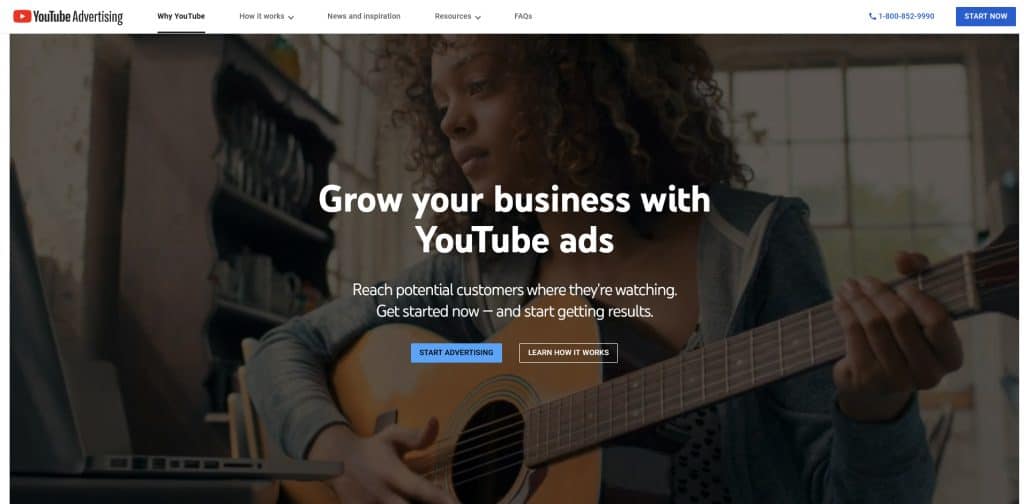
YouTube Ads allow local businesses to reach a vast and diverse audience through video advertising.
With various ad formats like TrueView, Bumper Ads, and In-Stream Ads, businesses can create engaging video content to capture local leads.
The following list shows 4 benefits of using YouTube Ads for lead generation.
- Video Content: Leverage the power of video to engage and inform your audience.
- Vast Reach: YouTube has over two billion logged-in monthly users.
- Various Ad Types: Choose from different ad formats to suit your campaign goals.
- Google Integration: Seamlessly use Google Ads to run YouTube campaigns.
The following list shows 3 potential drawbacks of YouTube Ads.
- Content Creation: Effective video content can require a significant creative effort.
- Ad Skippability: TrueView ads can be skipped after a few seconds, so capturing attention is crucial.
- Competition: As a popular platform, competition for ad space can be high.
Price
YouTube Ads operate on a bidding model with costs per view (CPV) or CPM.
Costs can vary widely, with an average CPV ranging from $0.10 to $0.30 or more.
Effective Ad Types Across Social Media Platforms

The effectiveness of ad types can vary based on the social media platform and the specific goals of your campaign.
Listed below is a breakdown of ad types that tend to perform well on the 8 different social media platforms.
- Facebook Ads: Image Ads are suitable for increasing brand awareness and engagement, while Video Ads are effective for conveying more complex messages. Carousel Ads are ideal for showcasing multiple products or features.
- Instagram Ads: Photo Ads with high-quality visuals work well to capture attention. Stories Ads are engaging and immersive for brief but impactful messages, and Video Ads are ideal for storytelling and showcasing products.
- LinkedIn Ads: Sponsored Content is effective for brand promotion and lead generation, Sponsored InMail is personalized and suitable for direct outreach, and Dynamic Ads are tailored for more engagement.
- Twitter Ads: Promoted Tweets are great for increasing engagement and driving clicks. Video Ads are ideal for sharing informative content, and Trending Promoted Ads are trend-focused for more visibility.
- Pinterest Ads: Promoted Pins are excellent for showcasing visual products, and Carousel Ads are ideal for storytelling or featuring a series of products.
- Snapchat Ads: Snap Ads are effective for brief but engaging messages, Filters and Lenses are highly interactive and best for creative campaigns, and Snap Map Ads are useful for location-based promotions.
- TikTok Ads: In-Feed Ads are engaging and suitable for storytelling, Branded Hashtag Challenges are ideal for user-generated content, and Branded Effects are creative and interactive.
- YouTube Ads: TrueView Ads are suitable for storytelling and engagement, Bumper Ads are short and memorable, ideal for brand awareness, and In-Stream Ads are effective for placing ads within other video content.
Choosing the right ad type depends on your target audience, campaign goals, and the specific features of each social media platform.
Experimentation and A/B testing can help determine the most effective ad types for your business.
Demographics

Different demographics respond to social media ads in unique ways.
For instance, younger audiences often engage more with visual platforms like Instagram and Snapchat, while older demographics may be more active on Facebook and LinkedIn.
Understanding these preferences and platform-specific quirks is crucial for local businesses to tailor their ad campaigns effectively and reach their target audience, thus improving lead generation and brand recognition.
Ad Placement's Role in Visibility and ROI
Ad placement significantly affects the visibility and ROI of social media advertising.
Placing an ad in the news feed tends to gain more attention and potentially higher ROI, as it's a prominent spot that users frequently engage with.
On the other hand, story placements can be more immersive but may require a different ad format and strategy, influencing ROI differently.
It's important for businesses to consider their goals and target audience when choosing ad placements to optimize their visibility and ROI.
Choosing the Right Social Media Platform for Local Ads

Choosing the right social media advertising platform for a local business involves several key considerations.
First, identify your target audience and where they spend their time.
Next, evaluate the ad formats and features offered by different platforms and how they align with your advertising goals.
Consider your budget and the platform's pricing structure, and lastly, monitor and adjust your strategy based on performance data to ensure you're getting the best ROI from your chosen platform.
Critical Selection Factors
When selecting an advertising platform, it's essential to consider several critical factors.
Firstly, assess the platform's user demographics and whether they align with your target audience, ensuring your ads will reach the right people.
Secondly, weigh the cost of advertising on the platform, including factors like ad creation expenses, ad placement costs, and any additional fees.
Lastly, consider the ease of use, including the platform's interface, ad creation tools, and the level of technical expertise required, ensuring that you can effectively navigate and optimize your ad campaigns.
These factors collectively contribute to making an informed choice about the right ad platform for your specific needs.
Flexibility in Switching Platforms

Switching between advertising platforms can vary in ease, depending on factors like ad content portability and the learning curve of the new platform.
Transitioning from one platform to another may require adjustments to ad creative, targeting, and campaign setup.
The ease of switching also depends on the platforms involved, with some offering better compatibility and transfer options than others.
Local Audience Targeting Options
Social media advertising platforms provide a range of customization options to target local audiences effectively.
These include precise geo-targeting, enabling businesses to narrow their reach down to specific cities or even neighborhoods.
Additionally, features like age and interest-based filtering help tailor ads to the right demographics, increasing the chances of engagement with the local audience.
This level of customization empowers businesses to refine their ad campaigns for maximum relevance.
Legal Aspects in Social Media Advertising

Legal considerations in social media advertising are essential to ensure compliance with data protection laws, such as GDPR or CCPA, when handling user data for targeting purposes.
Businesses must also adhere to advertising standards set by social media platforms and relevant industry regulations to maintain ethical practices in their ad campaigns.
Failing to address these legal aspects can result in penalties, so businesses should prioritize legal compliance when using social media advertising for local lead generation.
ROI Measurement for Social Media Campaigns
Measuring the ROI of social media advertising campaigns via analytics and tracking tools involves tracking key performance indicators (KPIs) such as click-through rates, conversion rates, and cost per acquisition with analytic tools.
Businesses should also consider calculating the return on ad spend (ROAS) to gauge the effectiveness of their campaigns.
Additionally, comparing campaign costs to the revenue generated through social media advertising can provide a clear understanding of the ROI.
Key Metrics for Success
Listed below are 4 key indicators that serve as the cornerstone for assessing the impact of social media advertising campaigns.
- Click-Through Rate (CTR): Measures the proportion of people clicking on your ads.
- Engagement Rates: Assesses user interactions such as likes, comments, and shares.
- Conversion Rates: Indicates the percentage of users taking the desired action, such as making a purchase.
- Return on Ad Spend (ROAS): Calculates the revenue generated compared to ad spend.
Optimizing for Better ROI

To optimize social media ad campaigns for better ROI, businesses can start by refining their audience targeting to reach the most relevant users.
They should also craft compelling ad creatives that resonate with the audience and continuously monitor and adjust ad performance.
Additionally, conducting A/B testing, focusing on high-performing platforms, and utilizing retargeting strategies can all contribute to improved campaign efficiency and ROI.
Seasonal Effects on Social Media Ad Performance
Seasonal trends can indeed influence the performance of social media ads.
During holidays or specific seasons, users might be more engaged and responsive to themed or time-sensitive ads.
However, it's essential for businesses to adjust their ad strategies accordingly, incorporating seasonal themes, promotions, and content that align with the trends to maximize engagement and conversion during these periods.
Cost Considerations for Local Social Media Advertising
The cost of social media advertising for local businesses can vary widely depending on several factors.
Typically, businesses pay based on their ad spend, which may vary from a few dollars to thousands per month, depending on the platform, audience size, and campaign objectives.
Costs can also include ad creation expenses if a business chooses to work with a professional designer or writer, but many businesses can manage campaigns themselves, reducing these additional costs.
Affordable Options for Smaller Businesses

There are affordable options among social media advertising platforms that can be suitable for small businesses.
Platforms like Facebook, Instagram, and Twitter offer various budget-friendly ad options, allowing small businesses to set their ad spend according to their financial constraints.
Additionally, TikTok and Pinterest also provide options that can be tailored to smaller budgets, making social media advertising accessible to a wide range of businesses.
Budget Planning
When planning a social media advertising budget, it's crucial to start by defining your campaign objectives.
Understand the specific goals you aim to achieve, whether it's brand awareness, lead generation, or sales.
Then, consider your target audience and research the platforms they are most active on.
Allocate your budget to these platforms accordingly, ensuring that your content and ad creatives are tailored to each platform's audience.
Monitoring and adjusting your budget regularly based on performance is essential for optimizing your campaigns and achieving the best ROI.
Lastly, consider factors like ad formats, ad placement, and bidding strategies when planning your budget, as these can significantly impact costs and campaign success.
Hiring Experts for Ad Management

Hiring an expert for managing social media ads can be a wise decision, especially for local businesses that lack the in-house expertise or time to effectively run and optimize campaigns.
Experts bring knowledge of platform-specific strategies, audience targeting, and ad creatives, which can lead to better results.
Additionally, experts can continuously monitor and adjust campaigns, ensuring that your budget is used efficiently to generate leads.
However, the decision to hire an expert should align with your budget and goals, and some businesses may choose to handle social media ads in-house if they have the necessary skills and resources.
Synergizing Social Media Ads with Other Lead Strategies
Social media advertising can be effectively integrated with other lead generation methods to create a holistic marketing approach.
For example, it can enhance SEO efforts by driving more traffic to your website and generating leads through targeted ads.
Additionally, when combined with email marketing, it can help nurture leads acquired through social media by delivering personalized content and building deeper connections with potential customers.
This integration maximizes the reach and impact of lead generation efforts.
